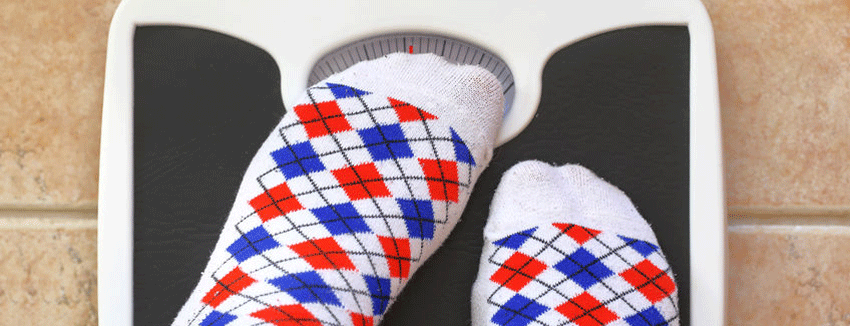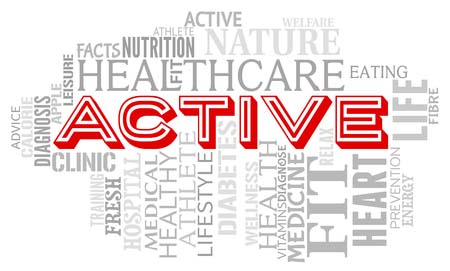|
March is here and that means we’re ready to celebrate Nutrition Month here at Physio Sport Med! This year, Dietitians of Canada has organized Nutrition Month to help Canadians Take the Fight out of Food! Each week will focus on a common “food fight” that Canadians face. We will be using three steps to help you overcome your “food fights” and make eating more enjoyable.
What topics can you look forward to this month?
Week 1: Food Fads Week 2: Digestive Woes Week 3: Picky Eating Week 4: Eating and Stress Week 5: Managing a Condition If you can relate to any of these, follow us on Instagram @physiosportmed and on Twitter @PSMOakville where we will be addressing each of the weekly topics. If you want more information on any of these topics or you have another food-related issue, our Registered Dietitian is available to meet with you and is excited to help you take the fight out of food! Have a happy Nutrition Month! Adapted by Danielle Boudreau from the Dietitians of Canada’s Nutrition Month campaign materials. Find more information about Nutrition Month at www.NutritionMonth2017.ca.
0 Comments
At Physio Sport Med of Oakville we believe in the value of education and expertise. Today we launched a new page on our site under the "LEARN" tab, as a place to let you know "What you need to know" about key conditions that we often deal with. We started with two articles written by our medical and therapist practitioners. The first article is on Concussion, and provides some basic information for the general public on what concussion is, advancement in treatment, and how we can help.
The second article is on Osteoarthritis. Likewise, this article provides some basic background on the condition and, again, how we can help in a variety of treatment options. Over time we will add to this content, so visit our LEARN page frequently! www.physiosportmed.ca/learn.html  Happy Valentines Day! It is no coincidence that Valentines Day falls in the middle of Heart Health Awareness Month. According to Public Health Canada, about 2.4 million people over the age of 20 live with heart disease. Cardiovascular disease is the leading cause of death in Canada. But there is good news- 8 out of 10 heart attacks can be prevented through healthy lifestyle changes. But what can you do?
So… take time tonight to enjoy your loved one, but instead of heading to a restaurant for some rich delights, try a heart healthy alternative. Go dancing! Challenge your loved one to bowling. Bundle up and go skating at a local rink. Happy Valentines Day from the team at Physio Sport Med of Oakville. I recently had the opportunity of attending a seminar on 'Concussion Spectrum of Disorders' at Toronto Western Hospital. Dr Julian Bailes, who was played by Alec Baldwin in the movie 'Concussion', was one of the keynote speakers. His talk was geared to football - especially timely with the Super Bowl recently played. His conclusion was that football is getting safer as rule changes occur and leagues recognize a need to change rules to reduce risk. This applies to many other sports as well (especially hockey at this time of year).
But - there is still a lot of work ahead!! Dr. Chris Woollam MD, Physio Sport Med of Oakville
While you are on youtube, check our Dr. Mike Evans’ clip 23 ½ hours . It is a short but great video explaining why we should all strive to be active 30 minutes a day, regardless age, sex and even snowfall.  Physio Sport Med of Oakville welcomes Danielle Boudreau to our clinic. Danielle is a Registered Dietitian and Sports Dietitian with Bachelors and Masters degrees from the University of Guelph and Ryerson in Applied Human Nutrition and Nutrition Communications. She is ready and able to provide group and one-on-one counseling. She is excited to combine her loves of food, nutrition and fitness to help others achieve their goals while maintaining a balanced lifestyle. What's the Difference Between a Dietitian and a Nutritionist? We are constantly being bombarded by nutrition information from family, friends, and the media. It can be overwhelming to make sense of it all. If you have tried finding a professional to help sift through these messages, you may have come across Registered Dietitians, nutritionists, holistic nutritionists, and many others. Although these titles are often used interchangeably, there are a few main differences between a dietitian and a nutritionist.
Dietitians are Regulated Professionals. Registered dietitians are governed by a college that strives to protect the public. In Ontario, “Registered Dietitian” is a protected title but Nutritionist is not. This means that anyone can call themselves a nutritionist regardless of their qualifications. An individual can only call themselves a Registered Dietitian if they have met the educational requirements and continue to prove their competence. Education. The first step to become a Registered Dietitian is to complete an accredited four-year undergraduate program in nutrition. Following this program, students must complete an internship or a Masters program that will provide practical training. The final step in becoming a Registered Dietitian is to complete a registration exam. This may sound like a lot, but the education continues! Registered Dietitians are expected to continuously upgrade their knowledge in order to maintain their license. Nutritionists aren’t required to have such intensive education and training - some may not have even studied nutrition. This doesn’t mean that nutritionists aren’t knowledgeable. The problem is that you can’t be sure of their educational background or where they are getting their information. Some nutritionists may be following media trends while others are providing evidence based information. When you see a Registered Dietitian, you are better provided with safe, current, and reliable information. Evidence-Based Practice. Registered Dietitians base their practice on evidence from scientific literature. Their education has given them the skills to evaluate research and translate the findings to the public. In addition, they have the skills to tailor this information to the needs of their clients and make individualized recommendations and care plans. If you are looking for nutrition information or support, reach out to our Registered Dietitian! It is that time of year again. A time of fresh starts and new beginnings – and of course New Years Resolutions. For some, it is a return to the healthy attitude and habits that they had before the splendors of the holidays. But for many of us, it has been more than a few months or years since we have been active and fit. In that case, it can be overwhelming to get started even when we know that it would good for us. Here are some things to think about to help you get started.
If you need some help with the aches and pains or would like to consult with a dietition. Give us a call. We're here to help. The temperature is falling and the days are getting shorter, and in my mind that only means one thing – ski season will be starting soon. I have hit the ski and snowboard sales and swaps so my equipment is ready, but how can I get my body ready for that first day one the hill? Knee injuries are very common with skiing. Many sites and bloggers will talk about quads and hamstrings, and how to prep them for the season. Although strength and power are critical, there are a few more things that need to be considered.
Alignment Stand in front of a mirror on one leg. Bend your knee to about 45 degrees with your weight on your heels. You should feel like you are sitting in a chair. Are you able to keep you kneecap directly above your toes? Often knees will drift inwards towards midline. If this occurs it may be your hip that needs strengthening, not your thigh muscles. You can do squats for days and it won’t make the correct muscle stronger. Skiing in this position can increase the stress on the medial, or inner, structures of the knees placing your MCL or meniscus at risk. The clam is a classic exercise to address this problem. Lie on your side with your hips relatively straight and your knees bent to 45 degrees. Tighten your lower abdominal muscles. Slowly raise the top knee while keeping your ankles touching. Focus on tightening your gluts and rolling your hip. You should feel the area of your back pocket working. Start by doing 3 sets of 15 to 20. How your muscles are working When skiing, the quads and the hamstrings work not only to create movement but also to control the speed of movement against momentum or gravity. For example, the hamstring can bend the knee during a step turn, but it also prevents the knee from snapping straight, or straightening too far during a fall. This eccentric strength of the hamstrings has been shown to decrease the rate of ACL injuries of the knee. A Norwegian hamstring curl can increase eccentric strength of the knees. Kneel facing away from a partner, with your hands crossed at chest level. Have your partner hold your feet at the ankles to prevent them from lifting off the ground. Keeping your back and hips straight, slowly straighten your knees to lower your body to the floor. Eventually you will lose control, fall forward on your hands into a push up position. Push up with your arms to return to the starting position. Start with three sets of 5-8 repetitions. Proprioception Proprioception is the body ability to know where it is in space without looking. To improve this work on simple balance exercises. For example, stand on one foot for thirty seconds a couple of times per day. If that becomes easy, try it with your eyes closed or while you toss and catch a tennis ball. Like your skis, make sure that you are finely tuned for the first day on the slope. Prevention is key. If you are concerned about joint aches and muscle pain, make sure to see a physician or physiotherapist before injury happens. Are you a believer of the Farmer’s Almanac? For the 2016-17 winter they are predicting a colder than normal temperatures in Southern Ontario with above-normal precipitation. As Canadians, many of us are all too familiar with best practices for shoveling snow and staying healthy. That still doesn’t seem to eliminate the vast number of injuries that result in visits to hospitals, doctors’ offices and physiotherapy clinics. Whether you facing this for the first time as a new Canadian, or the twenty first time, it doesn’t hurt to take a minute and get ready. Here’s our top ten list of key safety measures for snow shoveling that could help you avoid a visit to your health practitioner.
This information is provided as guidance only. PhysioSportMed of Oakville takes no liability in providing this guidance. Please contact your doctor if you have any concerns. PhysioSportMed of Oakville opened its doors on November 14, 2016 in the Uptown Oakville Ontario Core. At 231 Oak Park Blvd, Suite 104, we are conveniently located in the Trafalgar - Dundas area to serve Oakville and the surrounding area. We are a high level clinic that combines therapist and physician resources to better treat your conditions - and return you to an active lifestyle or back to your sport as quickly as possible. Tricia Hayton leads our physiotherapy. She has been in practice since 1997 and has specialized in orthopedic and sports physio. She focuses both on her patients, and on the community. Check out her full bio on our "Staff" page. Chris Woollam, MD, Dip Sport & Exercise Medicine, is the lead physician at PhysioSportMed. He has been practicing sport medicine in Toronto, Mississauga and Oakville for two decades and has been heavily involved in organized sport in all three locations. We are ready to take bookings to help you get back into play. Call us at 905.257.3456.
|
Physio Sport Med
Serving all of Oakville in the Uptown / Dundas-Trafalgar Core. Archives
May 2025
Categories |
- Info
- Book Now
-
Team
-
How We Treat
- Sport Medicine Consultation
- Manual - Exercise Physio
- Sport Physiotherapy
- Tissue Injections
- Acupuncture
- Vestibular Physiotherapy
- Osteopathy
- Chiropractic Care
- Concussion Program
- Shockwave Therapy
- Female Pelvic Health
- Male Pelvic Health
- Registered Massage Therapy
- Nutrition Consultation
- On-Field Therapy Coverage
- Custom Orthotics
-
What We Treat
- Sports Injuries
- Low Back Pain
- Osteoarthritis
- Motor Vehicle Accident
- Sprains
- Muscle Strains
- Concussion
- Rotator Cuff
- Tendonitis
- Neck Pain and Headaches
- Hip Pain
- Shoulder Pain
- Elbow, Wrist and Hand Pain
- Foot and Ankle Pain
- Post Surgical Rehabilitation
- Gait and Balance Disorders
- Knee Injuries
- Pelvic Floor Conditions
- Blog









 RSS Feed
RSS Feed